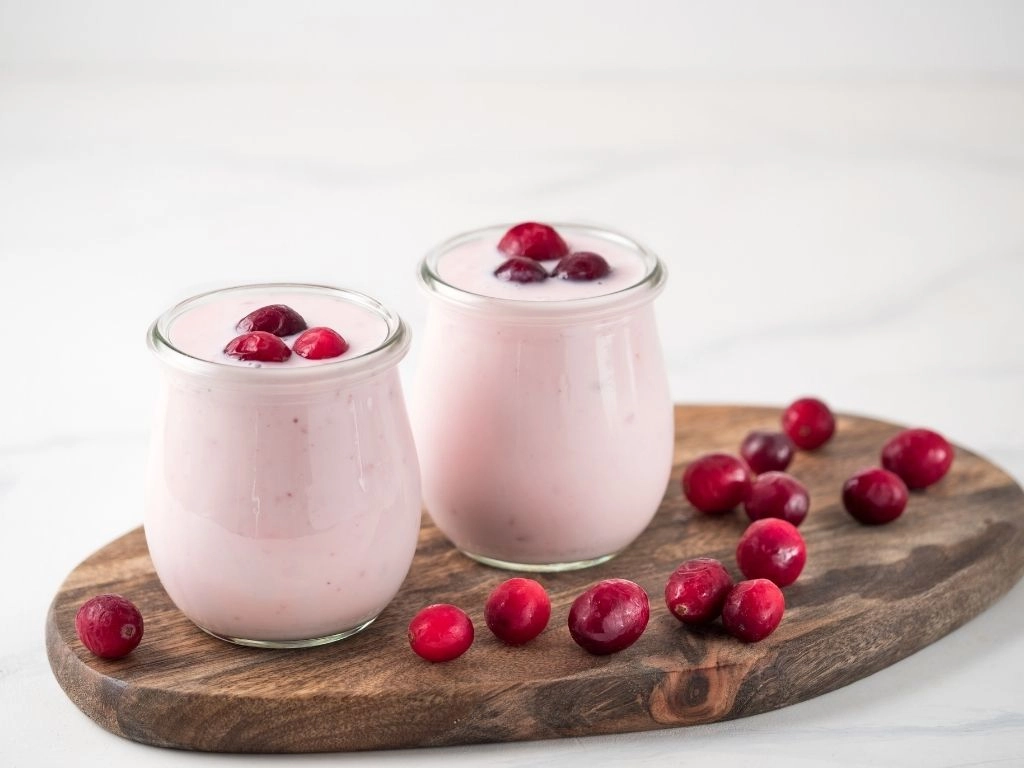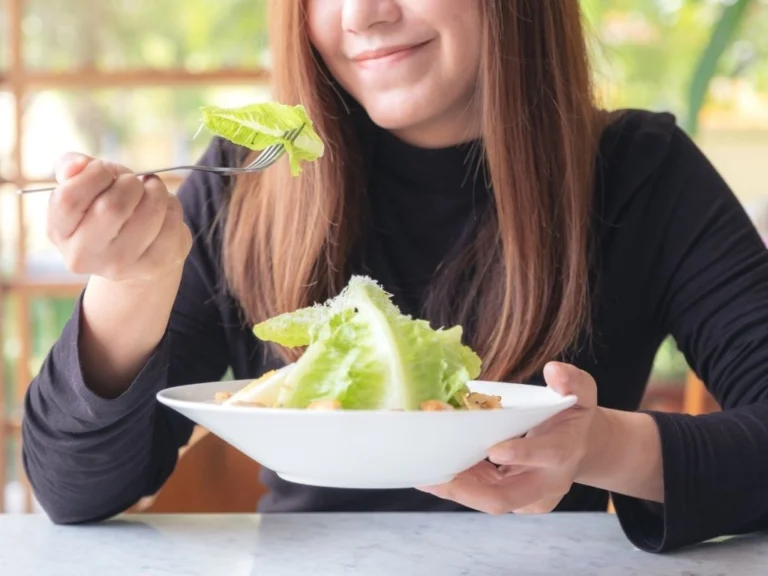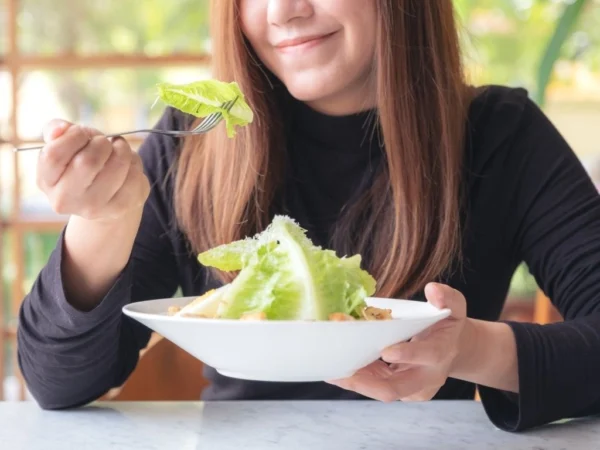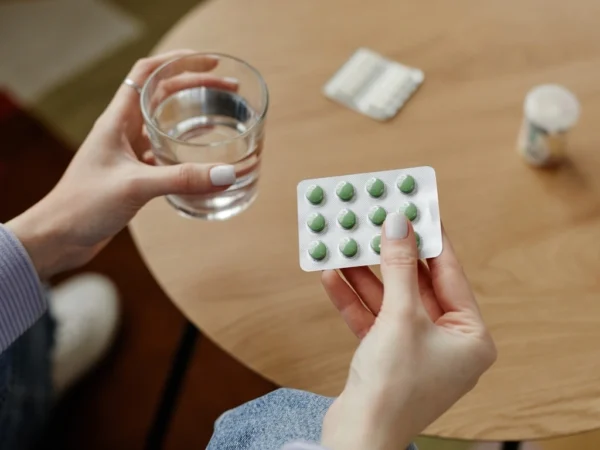The vagina is a vital part of the female body, yet it’s often a topic left out of conversations surrounding health. Many people approach the topic with hesitation or even embarrassment when it deserves the same openness and care as any other aspect of health.
Your vaginal environment is naturally delicate and dynamic, shaped by factors such as hormones, hygiene, lifestyle, and even the foods you eat. Understanding how these elements interact with your body is key to maintaining optimal vaginal health.
Nutrition, in particular, takes on a much bigger role than you might expect. Certain foods good for vaginal health help your body maintain a healthy pH, promote “good” bacteria, and ease common discomforts linked to dryness or infection.
By nourishing your body with balanced nutrition and mindful eating habits, you can strengthen its natural defenses and pave the way for lasting comfort and confidence.

Understanding the vaginal microbiome
The vaginal microbiome is a community of naturally occurring bacteria that helps keep the vagina healthy. When balanced, it protects against infections, supports natural lubrication, and maintains an optimal vaginal pH.
At the center of this balance are the “good” bacteria known as Lactobacillus. These beneficial microbes convert natural sugars in vaginal cells into lactic acid, which keeps the vagina slightly acidic — ideally with a pH between 3.8 to 4.2. This mild acidity acts as a natural defense that makes it harder for harmful bacteria to grow.
Apart from these bacteria, a small number of fungi, viruses, and other microorganisms also exist within the microbiome. Collectively, they make up a healthy, self-protecting environment that plays a key role in overall vaginal wellness.
However, this balance can easily be disrupted. Changes in hormone levels during your period, pregnancy, or menopause can alter pH levels and bacterial balance. Certain medications, particularly antibiotics, can also unintentionally wipe out the good bacteria along with the bad.
Using harsh feminine washes, douches, or heavily scented products to clean the vagina can further strip away the area’s natural protection, leaving you more prone to irritation or infection. Even stress, poor sleep, and diet can affect this delicate ecosystem. When the balance is thrown off, common issues like bacterial vaginosis (BV) or yeast infections can develop.
By taking care of your vaginal microbiome — through mindful hygiene, a balanced diet for vaginal health, and other habits — you help your body preserve its natural defenses. These simple choices go a long way in keeping your vaginal environment healthy, comfortable, and in balance.

What foods are good for vaginal health?
Your vaginal health relies on balance, and watching what you eat is crucial to maintaining it. Certain nutrients can help good bacteria flourish and regulate your pH levels, all while promoting hydration and tissue repair.
Below are eight foods good for vaginal health to consider adding to your routine:
1. Probiotic-rich foods
Yogurt, kefir, or fermented vegetables like kimchi and sauerkraut are packed with live, beneficial bacteria such as Lactobacillus, the same friendly residents found in your vaginal microbiome.
The probiotics found in these foods boost the production of lactic acid, which keeps vaginal acidity within its protective range. They may also lower the risk of BV, urinary tract infections, yeast infections, and some sexually transmitted infections.
If you’re wondering, “Is kombucha good for vaginal health?” The answer is yes, but consume it in moderation. Its natural probiotics can balance pH much like other fermented foods, though it’s best to choose low-sugar varieties.
2. Cranberries and other antioxidant-rich fruits
Cranberries are best known for preventing UTIs, but they also indirectly promote vaginal balance. They contain proanthocyanidins, which are compounds that prevent bacteria (like E. coli) from adhering to urinary and vaginal tissues.
While cranberries don’t lower vaginal pH on their own, their anti-inflammatory and antioxidant properties protect tissues and assist in building an environment where Lactobacillus can thrive, helping acidity stay within a healthy range.
Blueberries, strawberries, and pomegranates are other fruits for vaginal health that offer similar protection against oxidative stress and inflammation.
3. Avocados and other healthy fats
Healthy fats play a supporting role in maintaining pH stability through hormone balance and hydration. These foods are rich in vitamin E, a nutrient that protects mucous membranes and may reduce vaginal dryness while maintaining tissue elasticity.
While diets high in saturated fat may increase the risk of bacterial vaginosis (BV), incorporating monounsaturated fats (found in foods like olives, olive oil, peanuts, avocados, almonds, and pecans) and polyunsaturated fats (present in foods like salmon, sardines, flaxseed, corn oil, and sunflower oil) can help maintain healthy cell membranes without upsetting vaginal acidity.
4. Leafy greens
Spinach, kale, Swiss chard, collard greens, mustard greens, arugula, and romaine lettuce are nutrient powerhouses packed with folate, magnesium, and iron — nutrients that support blood flow and tissue repair.
Research also suggests that a higher intake of folate may lower the risk of bacterial vaginosis (BV) by strengthening the vaginal lining, supporting immune function, and promoting the growth of Lactobacillus in the microbiome — all of which help maintain a naturally acidic, protective pH.
5. Whole grains
Oats, quinoa, barley, buckwheat, and brown rice are fiber-rich staples often considered good foods for vaginal health because they nourish beneficial bacteria that support both vaginal and gut balance. A healthy gut microbiome helps sustain Lactobacillus populations throughout the body, including in the vaginal tract.
Whole grains also regulate blood sugar levels, which is important since higher glucose can alter the vaginal pH and increase the risk of BV.
6. Low-glycemic index (GI) foods
Foods that keep blood sugar stable, such as legumes, apples, non-starchy vegetables, and beans, help prevent the overgrowth of yeast and harmful bacteria. Frequent blood sugar spikes increase glucose levels in body fluids, which may feed yeast and disrupt vaginal pH. By keeping glucose stable, you help maintain a balanced vaginal environment and reduce the likelihood of recurring infections.
7. Soy-based foods
Soy protein contains phytoestrogens, which are plant compounds that act similarly to estrogen in the body. Estrogen generally alleviates vaginal dryness and discomfort, particularly during menopause.
Including traditional soy-based foods such as tofu, tempeh, and edamame in your diet for vaginal health can also support the production of vaginal glycogen by promoting the maturation of vaginal cells. Glycogen serves as fuel for Lactobacillus, enabling these beneficial bacteria to produce lactic acid and maintain a healthy, slightly acidic pH.
In addition to this, fermented soy products such as miso also provide probiotics, offering a twofold benefit for microbial and pH balance.
8. Water and hydrating foods
Hydration plays a surprisingly important role in vaginal comfort. Drinking enough water and eating foods with high water content, such as cucumbers, oranges, and melons, keeps mucous membranes moist and healthy. Moisture supports the body’s natural secretions, helping beneficial bacteria flourish and maintain a comfortable, slightly acidic pH while preventing irritation and infections.
Ultimately, vaginal health isn’t just about avoiding infections. You must strive to maintain an internal ecosystem where beneficial bacteria can grow. Eating a diet rich in foods good for vaginal health enables your body to naturally attain a slightly acidic pH, which in turn protects against discomfort and imbalance.

Get personalized nutrition support for women’s wellness
As you move through different stages of life, your nutritional needs naturally change. While it helps to have a better grasp of foods good for vaginal health, some recommendations won’t always work the same way for you as they do for others.
Working with a registered dietitian allows you to move beyond general advice and receive more tailored, evidence-informed support that aligns with what your body requires.
At Health Loft, you can connect with a nutritionist specializing in women’s health who meets you exactly where you are. They provide practical, compassionate guidance designed to make you feel more confident and healthy eating much more empowering.
We also believe in making expert care accessible, which is why we work with in-network dietitians and nutritionists you can consult for as little as $0, depending on your insurance policy. And with fully remote, telehealth sessions, you can access appointments from the comfort of your home, wherever you’re based.
Connect with a Health Loft dietitian today to start building a balanced, sustainable diet for vaginal health — and for every stage of your wellness journey.
This article was reviewed by Adrienne DePaul, MS, RDN. It is intended for informational purposes only and does not replace personalized nutritional advice.













